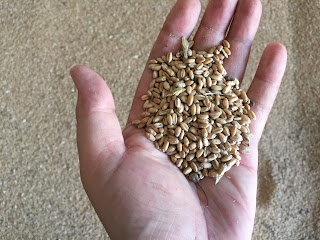
Ukraine’s Sunflower
harvest is expected to reach a record 13.0mmt this year, up nearly 1.5mmt on last year.
Between 2007 and 2010 sunflowers grew in popularity because farmers realised they are straight forward to grow, didn't mind the heat and dry and harvested early enough to still give you planting options in the autumn.
Then between 2010 and 2015 Ukraine's sunflower hectares remained stubbornly static at around 5.4mha before shooting up to just under 6.0mha in 2016 causing many to predict Ukraine will continue to plant more sunflowers in
2017 and beyond which might well be the case.
However
there is one nagging issue which means they might not.
Back in 2011
the Yanukovych government took a dim view on sunflowers preferring to promote corn and corn exports to raise much needed cash for his regime. I remember being told by a number of officials that if we planted more sunflowers we could expect problems but if we planted more corn then that would be absolutely
fine.
Then, at some
point around that time, the government issued a decree or passed legislation – it never
was clear to me if it was actual law or not – that stipulated the number of years a farm must
leave between planting a crop and planting the same crop again.
On the face
of it, it kind of made sense, to limit nutrient mining by farmers and to encourage
longer rotations than was being practised at the time.
I can’t remember
or find the details of the legislation but I do remember most of the regulations seemed broadly
sensible and in agreement with general agronomic principles by stipulating breaks
of three or four years between most crop types.
Except sunflowers.
The regulations
for sunflowers stated there must be an eight year break between sunflower crops.
Much discussion ensued that claimed the deep roots of sunflowers depleted the soils of
nutrients much more rapidly than any other crop and therefore there needed to
be a much long break between crops.
Which seemed
like hogwash on a number of levels to me.
Sure enough
the longer the rotation and the greater the variety of crops within the
rotation the better it is; we’ve known about that since Charlie Townshend championed
the four course rotation back in the 16th century (actually we’ve been practising
crop rotations since 6000BC but you get the point).
The question
now then is, does that eight year enforced sunflower break still stand, because
if it does, one in eight of Ukraine’s 42 million hectares of arable land is about
5.2mha.
So technically Ukraine might not allow itself to increase sunflower hectares above over this year’s
5.9mha crop.
* Since publishing this post it was brought to my attention that once Yanukovych left Ukraine the legislation on rotational constraints was dropped like a red hot potato thereby confirming it was hogwash and politically motivated.
But it does illustrate the power administrations have over food production and the environmental impact as currently being witnessed in the UK post CAP Brexit fall out and Russia's import substitution policy.
Thanks go to my pal Richard for updating me on Ukraine.
 We are about to kick off the final Black Sea crop tour of 2016.
We are about to kick off the final Black Sea crop tour of 2016.































